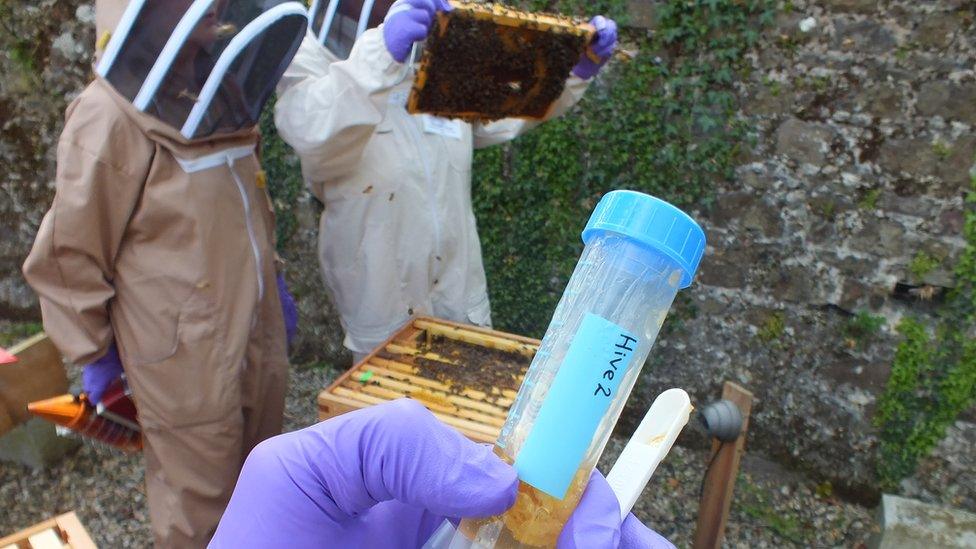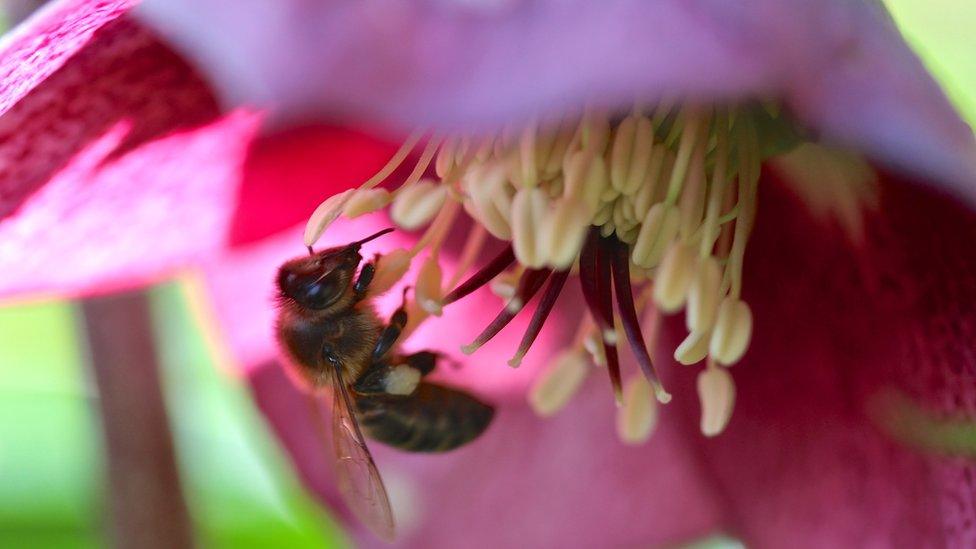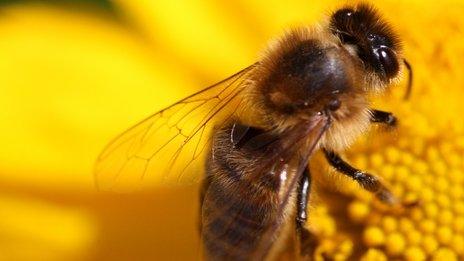Bees' favourite plants revealed by Botanic Garden study
- Published
Bees will be buzzing if you plant these in your garden
National Botanic Garden of Wales research has revealed which plants bees choose for their pollen.
Scientists investigated the species honey bees liked most during spring as part of efforts to protect the bees' environment and better understand their habits.
Peonies, wallflowers, roses, and hyacinth are among the top 10 favourite garden plants.
Favoured wild plants include gorse, willow, hawthorn, oak and dandelion.
Research head Dr Natasha de Vere said bees face a lack of habitat brought about by the loss of hedgerows, woodland and meadows rich in plant species.
Without a healthy and diverse diet, they are unable to withstand pressures from pests, disease and insecticides.

Scientists carrying out research at the botanic garden's hives
"The main conclusion is that, during the spring, honey bees need native hedgerow and woodland plants, which means we must conserve these habitats," Dr de Vere added.
"The research, external also tells us that honey bees are supplementing this main diet with smaller amounts from parks and gardens - proving what we do in our own backyard is crucial."
The project - part of the Carmarthenshire garden's Saving Pollinators, external scheme - identified plant DNA in honey collected from its eight hives and quarter of a million bees.
Of the 437 different types of plants in flower in April and May in the botanic garden, external, only 11% were used by bees.

Bees also favour hellebore flowers
Honey bees need access to a wide variety of food throughout spring as they replenish honey stores and feed their young.
The research, carried out by Aberystwyth and Bangor university scientists, found their diet is supplemented by spring-flowering bulbs.
Other favourites include apple and cherry trees, hellebores, oak, holly, and wallflowers.
Researchers now plan to analyse honey from across Wales to understand what bees eat in other parts of the country.
- Published3 July 2013

- Published19 November 2012
